Xerox 1075
Last modified: Dec 13, 2024 @ 1:48 pm
September 1982: Xerox launches their first copier in the "Marathon" 10 series, the Xerox 1075.
The 1075, was a medium-sized copier that could make 70 copies a minute and was designed to make 25,000 to 100,000 copies a month.
Text from the Xerox Product Guide 1984:
Available in five configurations so that you can choose exactly the features you need. Common to all are: automatic double-sided copying from single-sided originals or double-sided originals in the case of Systems 1 and 2; reduction for producing standard copies from oversize originals; the copy quality selector and monitoring system which ensures good quality copies, even from difficult originals. And to keep a record of each user’s copying volume, there’s the option of installing a user code system whereby access to the machine is by entering a personal code.
There’s also image shift which ensures that when you’re doing double-sided copying, the image on the second side is correctly positioned, leaving sufficient margin so that no information is lost in
the binding. The Xerox 1075 operates at 70 copies a minute and there’s the innovative visual display screen and instruction panel to guide you through all your copying tasks with words and pictures.
System 5 is the basic 1075 model for straightforward, high quality, fast copying. Systems 1-4 incorporate a
selection of practical additions to the basic model.
System 1 with fully automatic document handler and finisher is for when you regularly need lengthy reports copied
and stapled.
System 2 is ideal for multi-page documents which do not require stapling since, after copying, they are either to be combined with other material or bound.
System 3 has a semi-automatic document handler (SADH), sorter and computer forms feeder. Suitable if your
copying does not include a high proportion of multi-page originals.
System 4 gives speed and convenient one-off copying. The SADH has an integral computer forms feeder which
positions and copies continuous stationery like computer printout at up to 35 ‘pages’ a minute.
The 10 series represented a new generation of copiers. This became the most successful line of copiers in Xerox history and served to restore the company's finances and morale. The flagship Xerox 1075 became the first American-made product to win Japan's Grand Prize for Good Design. Altogether, 14 models were introduced between 1982 and 1986, six of which were still sold in 1990.
| IMAGES |
| SPECIFICATIONS | |
|---|---|
| Copy speed (per minute) | 70 |
| Paper tray | Main tray 1000 sheets Auxiliary tray 500 sheets |
| Output tray capacity | 150 sheets |
| Finisher/sorter/stacker | One or two 20-bin sorters. Bin capacity: 100 sheets. Stacker: 80 sets of 50 sheets, or 500 unstapled sheets |
| Staple function | Staples up to 50 sheets at a time |
| Reduction/zoom | Presets 98%, 77%, 74% and 65% Variable from 100% to 65% |
| Document handler | Semi or fully automatic document handler |
| Dimension and weight | |
| Depth | 203 (cm) / 80 (inches) |
| Width | 89 (cm) / 35.1 (inches) |
| Height | 119 (cm) / 46.9 (inches) |
| Weight | 563 (K grams) / 1241 (Lbs) |
| Floor space requirements | 3 x 2 (meters) / 9.8 x 6.6 (feet) |
Do you have any more information about this model, or have brochures / pictures? Please leave a reply in the form below, or send an email to xeroxnostalgia@outlook.com




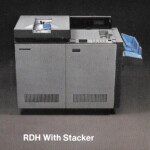


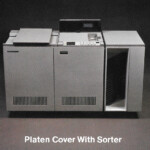
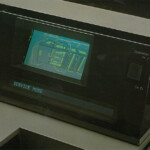
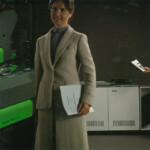


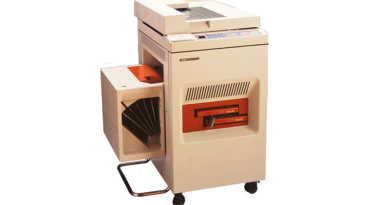
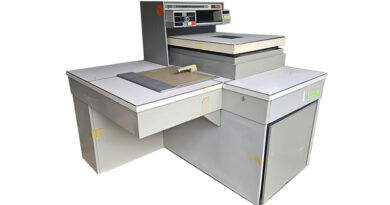
I worked for RXEG from 1980 to 1984, initially I worked for Jack Bell in the finisher department (stackers, staplers & sorters) but then was transferred to the electronics and software department, headed by Bob Green( I think). I wrote & debugged software for the 1045, 1035 & 1075 using the Intel MDS system with ICE. I really enjoyed my time there but left to go to a weighing system company that used the same Intel 8051 microprocessor system.
I used to know this thing so well. All the numeric codes, I’m sure I’d be lost now. Good document handler, lots of space to work. Great for litigation copying, even though the contrast adjustment was pretty poor (three rectangular shadows from the document feeder on dark copies) and it always cut off the right edge. I’d love to hear the sound of it again.
Around 1980-1981 I was working as an XRC FM operator at AT&T Int’l in Basking Ridge, NJ running a 9210. I don’t recall what kind of copiers they had but they were quite troublesome so when the 1075 was announced I got them to take an early look and they ended up getting some of the first shipments in our marketplace. The 10-series was a great product line.
Kodak Killer! We were all excited when this was launched. When you used the reduction, the whole platen glass would rise up and down to zoom. One of our larger tech reps (think Cedric the Entertainer) rode it up and down without causing any damage! (If you’re going to have the document platform rise up and down, you’ve got to know people are going to ride it! Apparently they planned for that.) Those of us on the Centralized product line (9000 series) never got cross trained on the 10 series, but might have after I left in ’88.
The code name for the 1075 was Lotus, the 1090 was Polaris.
Thanks for this information.
I worked on printing systems versions, laser printers 4150 & 4190
The introduction of “third generation” technology: flexible polymer photoreceptor belt, dicorotron charging devices, conductive mag brush development, etc. Note that some other early “10 series” machines used the older selenium alloy drum technology.
(I joined Xerox as a technologist in 1980 and retired 30 years later after my position was eliminated following the “no new xerographic engines” decision. I have no complaints – it was a good run.)
It was shared with me that the belts were manufactured by Kodak for Xerox in the 5334. I had one and liked it well enough, only the plastics became so brittle over time that it was like handling fragile glass.
Ex Xeroid XC1, XC2, DSBU software lab.
This is the best site on the internet today. Brings back such memories.
Thanks 🙂